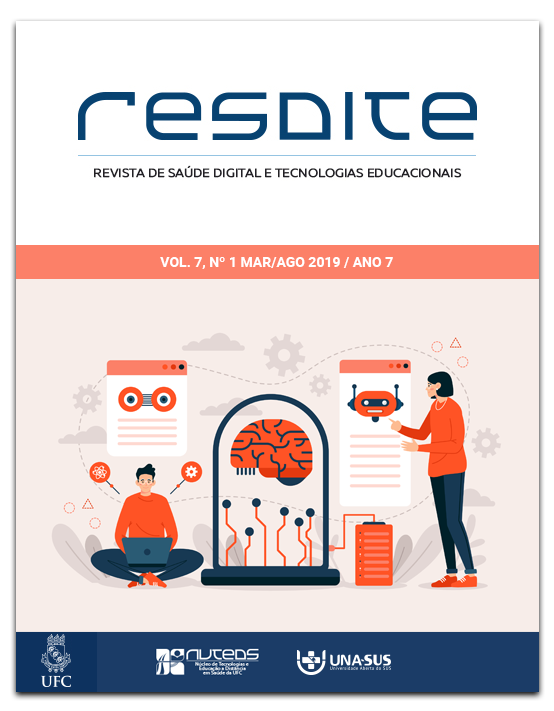Anti-smoking social media: Why are Stakeholders important?
Parole chiave:
Social media, Tobacco, TelemedicineAbstract
Introduction: The negative impact of smoking at global, national, community, and family levels is felt through deaths, financial burdens, and social problems. Objective: The objective of this study was to identify the stakeholders and to determine their importance in anti-smoking social media. Methods: The methodology consisted of two parts: a systematic review of the literature and semi-structured interviews. In our research, we use the E’s that the e-health project should have. Results: We found that some E's are not contemplated without the participation of an increased group of stakeholders. Conclusion: We concluded that identification and participation of the several stakeholders in the idealization of an anti-smoking social media could lead to benefits that ensure quality, economic advantages, and adherence. This study seeks to encourage further experimental and innovative attempts to control the tobacco epidemic.
Downloads
Riferimenti bibliografici
WHO. A guide for tobacco users to quit [Internet]. WHO. 2014 [citado 18 de abril de 2019]. Disponível em: http://apps.who.int/tobacco/publications/smoking_cessation/9789241506939/en/index.html
WHO. WHO report on the global tobacco epidemic 2013 [Internet]. 2013 [citado 18 de abril de 2019]. Disponível em: http://www.who.int/tobacco/global_report/2013/en/
INCA, PAHO, organizadores. Pesquisa especial de tabagismo - PETab: relatório Brasil. Rio de Janeiro, RJ : Brasília, DF, Brasil: Instituto Nacional do Câncer, Ministério da Saúde ; Organização Pan-Americana da Saúde - Representação Brasil; 2011. 199 p.
Figueiredo VC, Turci SRB, Camacho LAB. Controle do tabaco no Brasil: avanços e desafios de uma política bem sucedida. Cad Saúde Pública [Internet]. 21 de setembro de 2017 [citado 9 de junho de 2020];33(suppl 3). Disponível em: http://www.scielo.br/scielo.php?script=sci_arttext&pid=S0102-311X2017001500101&lng=pt&tlng=pt
Malta DC, Oliveira TP, Vieira ML, Almeida L, Szwarcwald CL. Uso e exposição à fumaça do tabaco no Brasil: resultados da Pesquisa Nacional de Saúde 2013. Epidemiol Serv Saúde. junho de 2015;24(2):239–48.
Portes LH, Machado CV, Turci SRB, Figueiredo VC, Cavalcante TM, Silva VL da C e. A Política de Controle do Tabaco no Brasil: um balanço de 30 anos. Ciênc saúde coletiva. junho de 2018;23(6):1837–48.
Instituto Brasileiro de Geografia e Estatística, organizador. Pesquisa nacional de saúde, 2013: percepção do estado de saúde, estilos de vida e doenças crônicas: Brasil, grandes regiões e unidades da Federação. Rio de Janeiro: Instituto Brasileiro de Geografia e Estatística - IBGE; 2014. 180 p.
Echer IC, Barreto SSM. Determination and support as successful factors for smoking cessation. Revista Latino-Americana de Enfermagem. junho de 2008;16(3):445–51.
Benetoli A, Chen TF, Aslani P. How patients’ use of social media impacts their interactions with healthcare professionals. Patient Education and Counseling. março de 2018;101(3):439–44.
De Martino I, D’Apolito R, McLawhorn AS, Fehring KA, Sculco PK, Gasparini G. Social media for patients: benefits and drawbacks. Current Reviews in Musculoskeletal Medicine. março de 2017;10(1):141–5.
Mattingly J. Innovative patient care practices using social media. Journal of the American Pharmacists Association. maio de 2015;55(3):288–93.
Antheunis ML, Tates K, Nieboer TE. Patients’ and health professionals’ use of social media in health care: Motives, barriers and expectations. Patient Education and Counseling. setembro de 2013;92(3):426–31.
Secom. Pesquisa brasileira de mídia 2015: hábitos de consumo de mídia pela população brasileira. 2016.
Briner RB, Denyer D. Systematic Review and Evidence Synthesis as a Practice and Scholarship Tool. The Oxford Handbook of Evidence-Based Management [Internet]. 11 de junho de 2012 [citado 20 de setembro de 2018]; Disponível em: http://www.oxfordhandbooks.com/view/10.1093/oxfordhb/9780199763986.001.0001/oxfordhb-9780199763986-e-7
Sampaio R, Mancini M. Estudos de revisão sistemática: um guia para síntese criteriosa da evidência científica. Revista Brasileira de Fisioterapia. fevereiro de 2007;11(1):83–9.
Charmaz K. Constructing grounded theory. London ; Thousand Oaks, Calif: Sage Publications; 2006. 208 p.
Eysenbach G. What is e-health? J Med Internet Res. 18 de junho de 2001;3(2):e20.
Freeman E. Stakeholder Theory, State of the art. 1o ed. Vol. 1. 1984. 363 p.
Freeman RE. The Politics of Stakeholder Theory: Some Future Directions. Business Ethics Quarterly. 23 de janeiro de 2015;4(04):409–21.
Kildea J, Battista J, Cabral B, Hendren L, Herrera D, Hijal T, et al. Design and Development of a Person-Centered Patient Portal Using Participatory Stakeholder Co-Design. Journal of Medical Internet Research. 11 de fevereiro de 2019;21(2):e11371.
Van Velsen L, Wentzel J, Van Gemert-Pijnen JE. Designing eHealth that Matters via a Multidisciplinary Requirements Development Approach. JMIR Research Protocols. 24 de junho de 2013;2(1):e21.
Greaves F, Ramirez-Cano D, Millett C, Darzi A, Donaldson L. Harnessing the cloud of patient experience: using social media to detect poor quality healthcare: Table 1. BMJ Quality & Safety. março de 2013;22(3):251–5.
Oliveira F, Silva N, Pereira FC, de Melo JF, Cavalcante AM, de Moraes L. Apresentando o TratBem: Suporte Social, Informacional e Psicológico ao Tabagista. 2015;10.
Constantinides E, Fountain SJ. Web 2.0: Conceptual foundations and marketing issues. Journal of Direct, Data and Digital Marketing Practice. janeiro de 2008;9(3):231–44.
##submission.downloads##
Pubblicato
Fascicolo
Sezione
Licenza
Os originais aceitos e publicados tornam-se propriedade da Revista Brasileira de Tecnologias Educacionais em Saúde. A revista adota a Licença Creative Commons, CC BY-NC. É possível acessar, baixar (download), copiar, imprimir, compartilhar e distribuir os artigos publicados conosco, desde que para uso não comercial, mencionando a RESDITE e atribuindo os créditos de autoria. A revista permite que os autores distribuam a versão do trabalho publicada conosco (ex.: em repositórios institucionais), desde que seja reconhecida a autoria e a publicação inicial na RESDITE.

